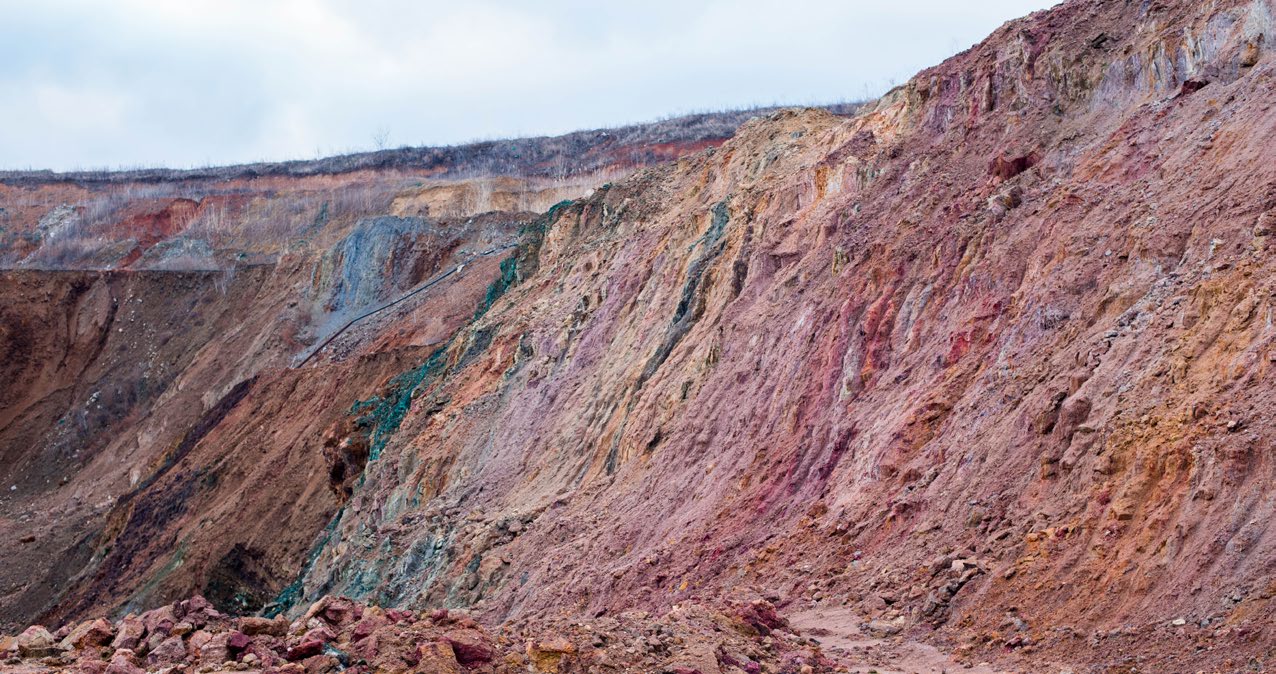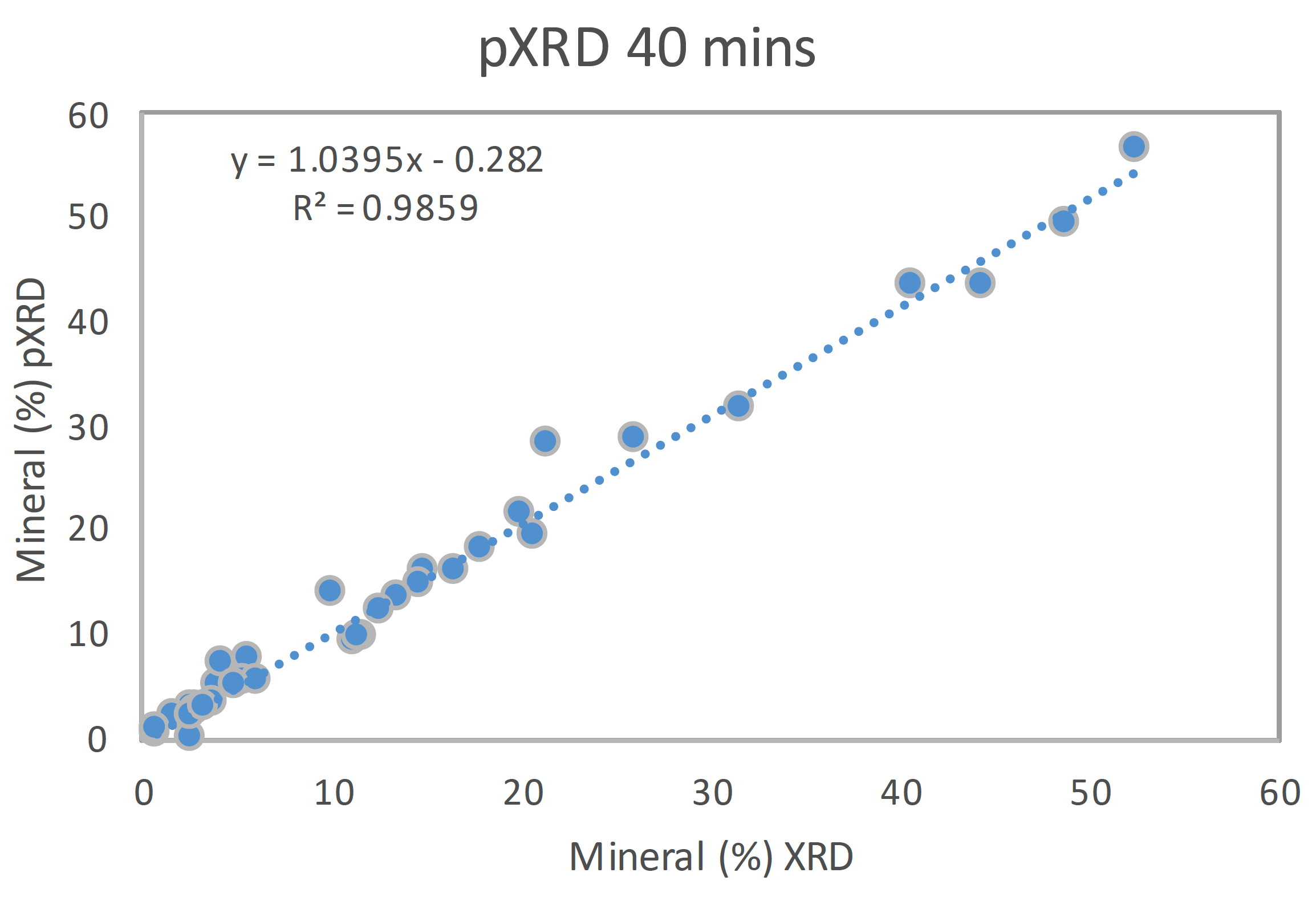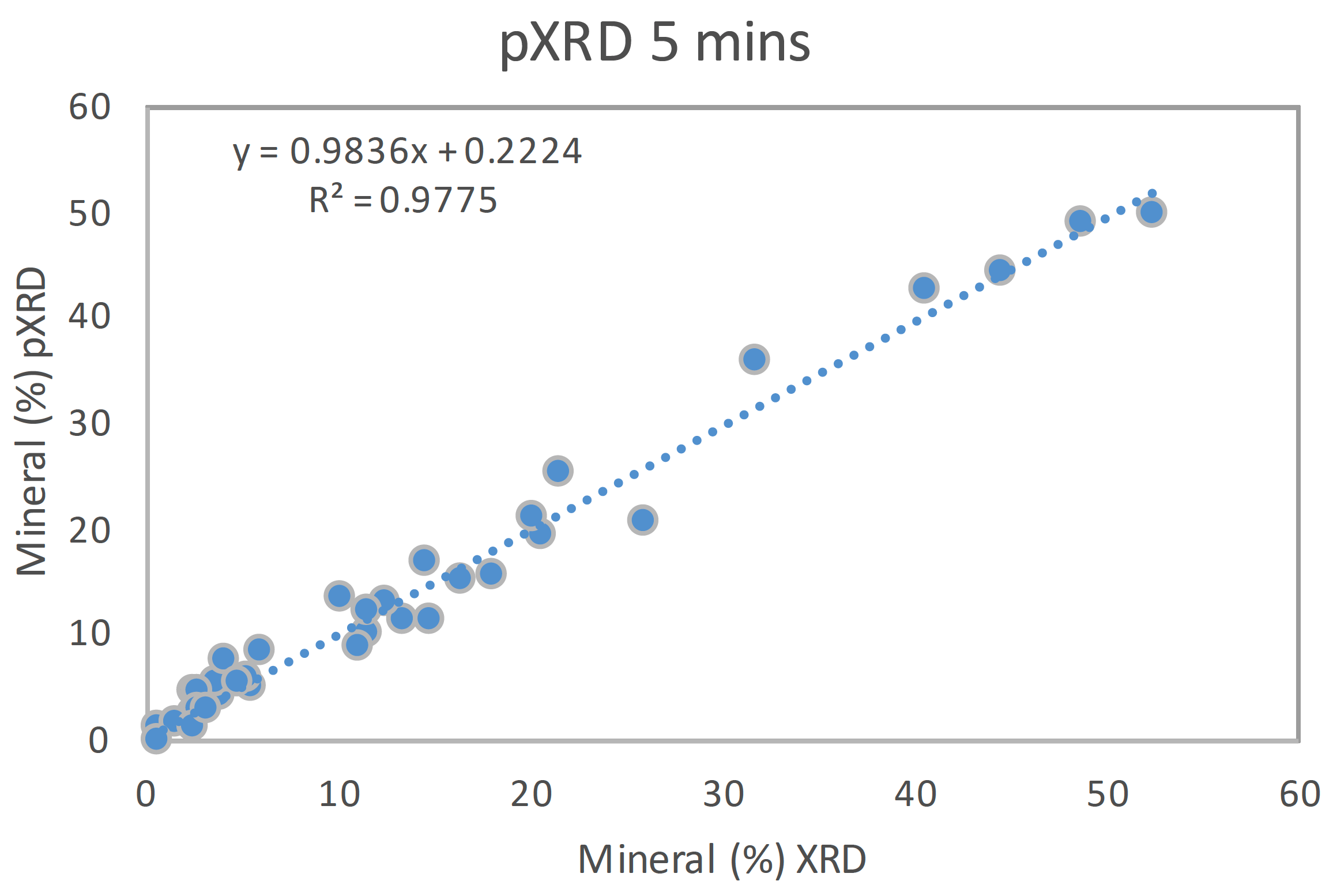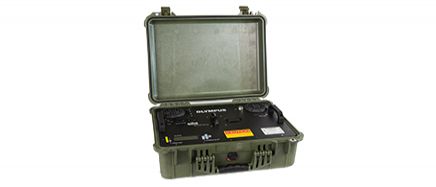 |
Exploration, Mining, and Extraction
Olympus portable X-ray diffractometers (pXRD) provide geologists and metallurgists with quantitative mineralogy in near real time, across all mineral species. This enables the exploration geologist to make more informed infield decisions. It also provides the metallurgist with the information needed to develop more effective blending strategies and yield better graphite recoveries.
Benefits of Olympus pXRD
The benefits of Olympus’ innovative pXRD analyzers include:
|
|
Mineral Quantification in the Field
Olympus pXRD analyzers can identify and quantify all mineral phases, irrespective of chemistry and reflectance. The portable TERRA® XRD instrument enables geologists and metallurgists to do the following on-site:
- Quantify graphitic carbon and carbon hosted by carbonates (Figure 1)
- Quantify problematic gangue minerals (for example, chlorite, talc, and clays) that can float during flotation, contaminating and lowering the concentrate quality
This information can be used by the geologist to help identify areas that warrant further exploration. A knowledge of quantitative mineralogy in near real time can also be used by the metallurgist to develop appropriate blending strategies, thereby optimizing the process.

Figure 1. Comparison between graphitic carbon and carbon as carbonate as measured by a laboratory compared to estimates from quantitative XRD.
Olympus pXRD—Data Quality and Runtime Performance
While Olympus pXRD analyzers provide the convenience of quantitative mineralogy on-site, without the need for complicated sample preparation procedures, the user can also be confident in the quality of the results they obtain. To illustrate the quantitative capabilities of the Olympus pXRD products, comparisons have been made with a large, 2 kW, conventional lab-based XRD instrument (Figure 2) at varying run times.
To further illustrate the quantitative capabilities of the Olympus pXRD instruments, comparisons have been made between laboratory assay data and chemistry that has been back-calculated from the results of quantitative mineralogy. The correlation between these results clearly illustrates the excellent quantitative capabilities of our pXRD analyzers (Figure 1).
 |  | ||
 |  | ||
Figure 2. The graphs show excellent correlation between results of quantitative mineralogical analysis obtained from a lab-based, 2 kW XRD instrument and the Olympus TERRA® portable XRD at varying runtimes. |


